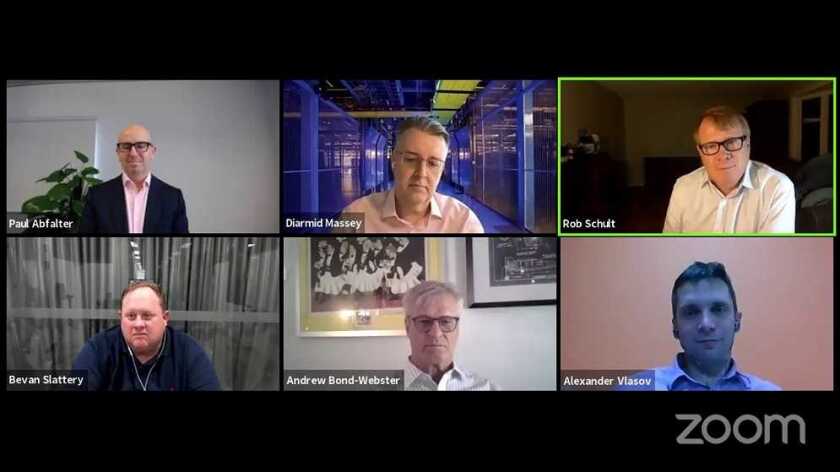Moderated by TeleGeography’s research director Robert Schult, he was joined by Diarmid Massey, senior vice president of Asia Pacific at Equinix; Andrew Bond-Webster, senior vice president of Asia Pacific sales at Infinera Corp; Paul Abfalter, head of North Asia & global wholesale at Telstra; Bevan Slattery, founder of SUB.CO; and Alexander Vlasov, director carrier services at Megafon.
Unsurprisingly, discussions kicked off with talk of Covid-19 and the impact it has had on the region’s subsea activity. Schult asked the panellists whether or not it has been “a transformative event for subsea demand” and do they expect to level off, to which Massey replied:
“We’re certainly not sure the demand is levelling off. Enterprise demand has probably dropped off a bit because people aren’t working in offices and you are not really seeing the demand at the core.
However, enterprises have accrued a healthy demand to cloud-based video conferencing, content and communications platforms like Teams, Zoom, Netflix etc which he says has seen a demand increase of “30-40% per quarter as we go through the year”.
“That started all the way back in Q1 when these companies started positioning themselves for this demand by buying all this infrastructure, now we’re seeing them fill it. And I think we’ll see a third wave of infrastructure growth.”
Chiming in with his thoughts on the effect the pandemic has had on the supply chain particularly in the areas of permitting and access, Bond-Webster said “The whole supply chain issue is one that we have to manage very closely.”
“At the beginning of the year we saw a number of challenges as markets became harder to access and supply chains got stretched. I think we’ve been fortune is that the solutions we provide enables you to add capacity through licences and so doesn’t necessarily require the movement of hardware or deployment of equipment into different countries. “
Prompted by Schult, one of the most interesting discussions came when talking about the cloud and the knock-on effect it might have on sector.
Specifically, it was asked whether the fact that the cloud is now closer to the end user will diminish the requirements for international capacity because as Schult’s put it “we’re not tromboning things back and forth”
Slattery replied saying that content and compute will continue to be pushed closer to the edge adding “where I think the next big growth will be - and 5G will certainly enable certain things to happen which will lead to an increase in consumption – is AI, machine learning, interconnecting massive data lakes and IoT. Those will be a massive adoption and consumer of subsea capacity.”
“I also think alternative routes will also be a big part of that for various reasons, geopolitically, for diversity etc. So, I think the death of subsea due to edge is greatly exaggerated.”
MegaFon’s Vlasov echoed these sentiments saying that while the company is a “newcomer in the subsea world” that the traffic is growing and “regardless of the content moving to the edge, you still need to carry this traffic between the data centres even though its coming closer to the customer”.
We left the last word with Telstra’s Abfalter who made so other more likely predictions for the space. He shared that while he doesn’t believe the edge will me any slowdown for subsea, “you might see a combination of edge and new technologies pushing SLTE (Submarine Line Terminal Equipment) even more into city PoPs and into data centres”.
“Perhaps less CLS’ (cable land stations) at the shore, this is definitely something we see more of within a five-year time frame. Edge will just increase use cases for subsea rather than decrease.”






